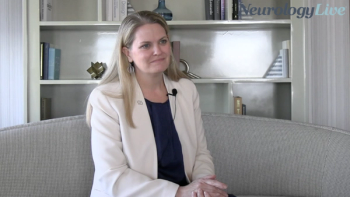
Daily Spasticity Burden Represents Great Challenge for Patients With Multiple Sclerosis
In total, 72% of responders reported spasticity as a top 5 most problematic symptom, with 17% ranking it as the single most difficult symptom of MS to manage.
Findings from SEEN-MS (Symptoms and Emotions Exploration Needed in Multiple Sclerosis Spasticity), a cross-sectional, online survey, recently highlighted the most problematic symptoms experienced by patients with multiple sclerosis and spasticity (pwMSS), as well as raised awareness about the substantial burden these patients face, and the importance to manage these symptoms on a day-to-day basis.1
Among a cohort of 961 US-based pwMSS responders, 17 different co-occurring symptoms were reported, with more than 60% of participants saying they have at least 8 additional symptoms coexisting with spasticity. "These results emphasize the importance of proactive communication regarding the consultation of symptoms associated with spasticity and addressing the individual needs and treatment goals of pwMSS," the authors wrote.
The data were presented at the
READ MORE:
In total, 78% of the cohort was female, with a mean age of 56.6 years (±10.5) and a mean of 16.3 years (±9.7) from diagnosis. After experiencing spasticity symptoms for a mean of 11.1 years (±9.6), patients self-reported a wide spectrum of disability on Patient-Determined Disease Steps, ranging from 1 (mild disability) to 7 (wheelchair/scooter).
Spasticity represented the most problematic symptom in 17% of pwMSS and was considered a top-5 most problematic symptom by 72% of the cohort. Fatigue (59%), difficulty walking (45%), and pain (40%) rounded out the other top-5 most problematic symptoms.
In addition to understanding the symptoms, investigators assessed the importance of how they are managed. Slowing disease progression was reported as the primary treatment goal in 68% of patients, whereas managing symptoms was more highly prioritized in the remaining 32%. Notably, the importance of managing symptoms (46%) was found to be nearly as important as slowing disease progression (54%) when patients were asked to consider their day-to-day treatment goals.
Spasticity and muscle tightness is commonly treated with medications, physical and occupational therapy. If untreated, spasticity can lead to serious complications, including contractures and pressure sores. These complications also act as spasticity triggers, which can thus set off an escalation of symptoms.2
Nabiximols (Sativex; GW Pharmaceuticals), a cannabidiol-based oral spray, recently
For more coverage of CMSC 2021,
REFERENCES
1. Newsome SD, Thrower B, Hendin B, Wagner J, Patterson J, Danese S. Symptom burden and treatment goals of people with multiple sclerosis spasticity: results from SEEN-MSS, a large scale, self-reported survey. Presented at 2021 CMSC Annual Meeting; October 25-28. Poster SXM10
2. Spasticity. National MS Society. https://www.nationalmssociety.org/Symptoms-Diagnosis/MS-Symptoms/Spasticity . Accessed October 27, 2021.
3. Javaid S, Lublin F, Nicholas J, et al. Nabiximols efficacy in MS spasticity: treatment effects on spasticity Numeric Rating Scale and muscle spasm frequency in 2 randomized clinical trials. Presented at ECTRIMS 2021; October 13-15. Abstract P812
Newsletter
Keep your finger on the pulse of neurology—subscribe to NeurologyLive for expert interviews, new data, and breakthrough treatment updates.

































